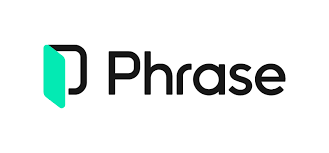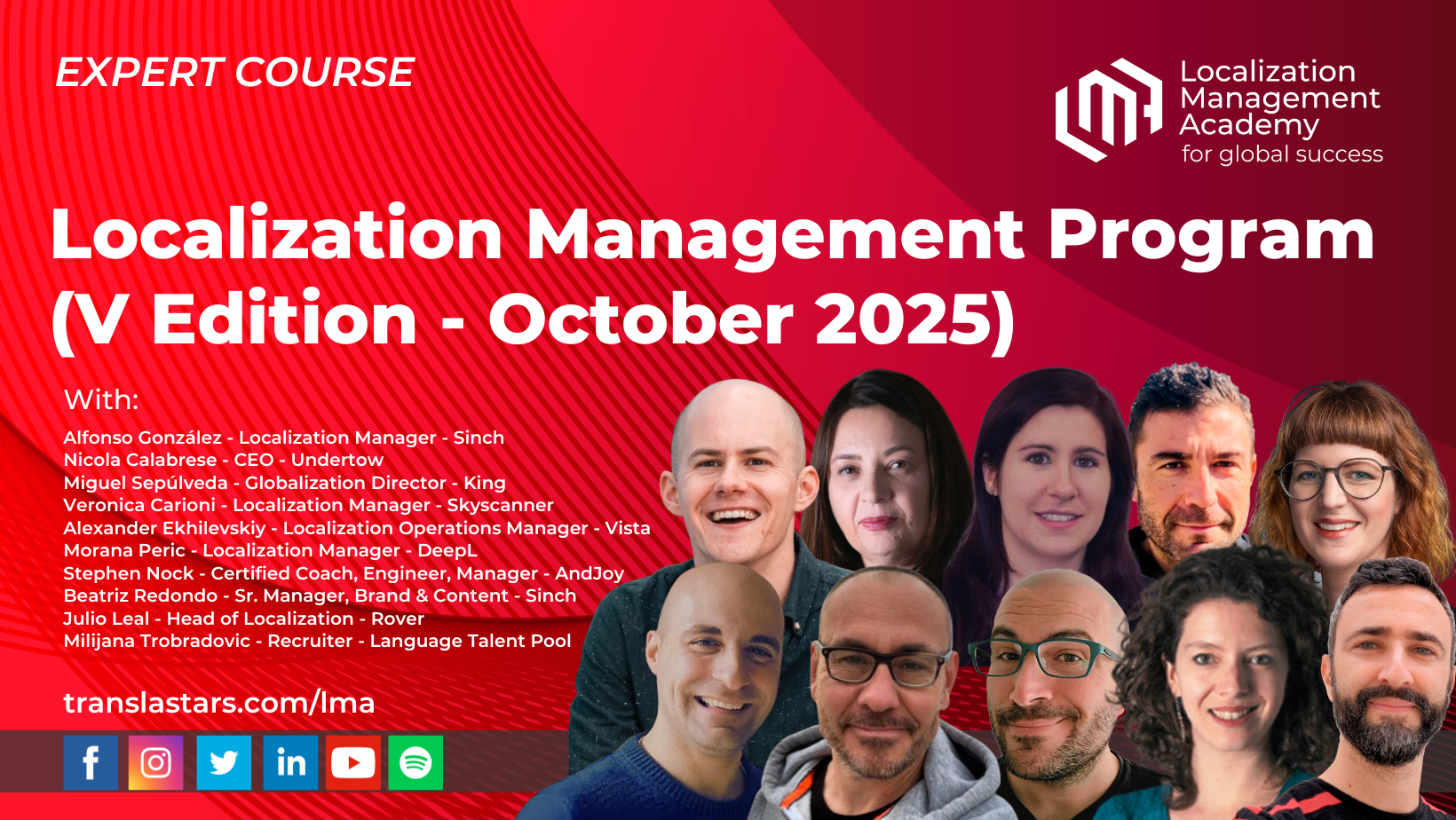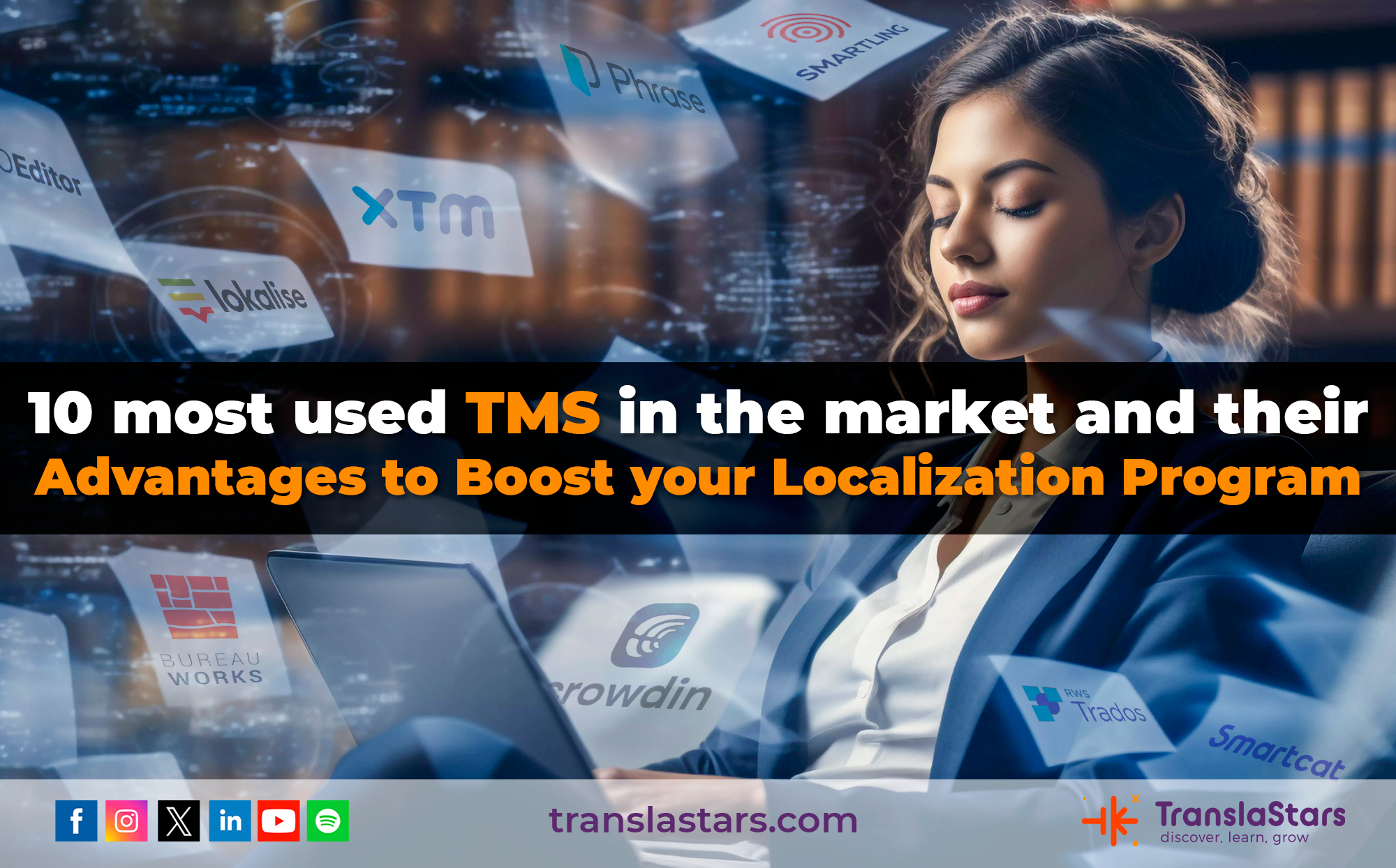Expanding into international markets requires more than just translating your content, it demands a strategic approach to localization.
A Translation Management System (TMS) can streamline that process, helping you scale efficiently, maintain consistency, and reduce costs. But with so many options available, how do you choose the right one?
We previously shared valuable insights about the 10 Most Used TMS in the Market and their Advantages to Boost your Localization Program.
Here, we’ll explore what to look for in a TMS, highlight key features, and share insights from industry experts to help you make the best choice for your business.
A Translation Management System (TMS) can streamline that process, helping you scale efficiently, maintain consistency, and reduce costs. But with so many options available, how do you choose the right one?
We previously shared valuable insights about the 10 Most Used TMS in the Market and their Advantages to Boost your Localization Program.
Here, we’ll explore what to look for in a TMS, highlight key features, and share insights from industry experts to help you make the best choice for your business.
1. Why a TMS Matters
A TMS streamlines translation workflows by centralizing processes, automating repetitive tasks, and enabling collaboration. It helps ensure consistency across content, reduces turnaround times, and improves quality, all while scaling with your growth.
Instead of juggling spreadsheets, endless email threads with translators, or manually uploading and downloading content from your CMSs, a TMS centralizes all of it. It stores past translations, helps enforce consistent terminology, and often connects directly to your content systems.
To add further specificity and authority, we highlight Stephan Schöning, VP Strategic & Product Marketing at Phrase, who, in the blog post named “What Makes a Translation Management System, and How to Choose the Right One for Your Needs”, emphasized that a TMS is an important resource for global growth “designed to help businesses automate, translate, and manage content for international markets at scale”.
So, how to choose the best one for our purpose? Let’s dive deeper.

2. Understand your Localization Goals
Before choosing the best TMS that fits your needs, you should be able to define and identify your localization objectives.
So ask yourself:
Having said that, we would like to make clear that you should not make your choice based on popularity but rather on what you need. A TMS that works great for a software startup might be wrong for an e-commerce brand or a marketing agency.
Your choice depends on several factors: your content types, team size, in-house language resources, and even how tech-savvy your staff is.
So, before you even start demoing platforms, take a good look inward. What are your localization goals? Do you need to scale fast? Are you struggling with terminology consistency? Or do you simply need to reduce the chaos of managing vendors and deadlines?
Once you have all these answers clear in your mind, we can go on and see which are the core features you should look at.
Take a look at our upcoming course "Choosing the Right TMS for Localization Managers" on our Localization Management Academy site, and don't miss the chance to become a pro in this field.
So ask yourself:
- Am I launching in new markets?
- Do I manage multiple content types (e.g., product descriptions, UI strings, marketing materials, and more)?
- Is speed or regulatory compliance more important?
Having said that, we would like to make clear that you should not make your choice based on popularity but rather on what you need. A TMS that works great for a software startup might be wrong for an e-commerce brand or a marketing agency.
Your choice depends on several factors: your content types, team size, in-house language resources, and even how tech-savvy your staff is.
So, before you even start demoing platforms, take a good look inward. What are your localization goals? Do you need to scale fast? Are you struggling with terminology consistency? Or do you simply need to reduce the chaos of managing vendors and deadlines?
Once you have all these answers clear in your mind, we can go on and see which are the core features you should look at.
Take a look at our upcoming course "Choosing the Right TMS for Localization Managers" on our Localization Management Academy site, and don't miss the chance to become a pro in this field.

3. Core Features to Look For
Of course, features do matter, but not all features matter equally.
As Adria Crangasu from Blend Localization states in their blog post, “How to Choose the Right Translation Management System (TMS)”, “not every TMS is created equal, with the best ones sharing the same key translation management system features.”
As Adria Crangasu from Blend Localization states in their blog post, “How to Choose the Right Translation Management System (TMS)”, “not every TMS is created equal, with the best ones sharing the same key translation management system features.”

But what are these key must-have features?
- Translation memory to reuse content: a translation memory stores previously translated content, allowing for reuse in future projects. This not only ensures consistency across your content but also reduces the time and cost associated with translating repetitive text.
- Workflow automation to reduce project management overhead: automation is at the heart of an effective TMS. Features like translation memory and automated workflows help speed up the localization process, reduce manual errors, and allow your team to focus on more strategic tasks. This is particularly beneficial when dealing with large volumes of content or tight deadlines.
- API & integrations with your CMS, code repositories, or support tools: your TMS should integrate smoothly with your current content management systems (CMS), customer relationship management (CRM) tools, and other platforms. This ensures a seamless flow of content between systems, reducing the need for manual transfers and minimizing the risk of errors.
- Real-time collaboration and workflow control: an effective TMS provides robust workflow management, giving you oversight of every stage of the translation process. This includes assigning tasks, tracking progress, and ensuring that deadlines are met. Such control is crucial for maintaining consistency and meeting project milestones.
- Intelligent features, such as AI-based quality checks: this feature is essential, since it helps automate error detection and ensure translation accuracy at scale. To explore further this aspect of localization, subscribe to the II edition of our Master in AI & Innovation for Localization, coming up in September 2025.

- “Needs Assessment: I map out all stakeholders, content types, localization volumes, integrations, and current pain points.
- Feature Prioritization: I focus on must-haves like automation, scalability, integration flexibility (e.g., with CMS, code repos), QA capabilities, and vendor/client collaboration features.
- Market Scan: I compare vendors based on how well they align with the needs and ecosystem. Looking at usability, pricing model, roadmap, and service reputation.
- Trial & Testing: I prefer piloting 2 top candidates to validate real-life performance.
- Decision: I involve a few people just to make sure we are picking the right tool."
Having said that, it is now clear that by combining a clear understanding of your needs with thorough market research and hands-on testing, you can confidently select a TMS that truly supports your localization goals and drives global success.
And, to explore the topic of localization, don’t forget that you can still enroll in our upcoming V edition of our Localization Management Program starting this October.
And, to explore the topic of localization, don’t forget that you can still enroll in our upcoming V edition of our Localization Management Program starting this October.
The course is structured in two parts:
In the first part, you will discover how the localization industry is structured, how to manage projects, what the tools of the trade are, and how to land a job.
The second part will teach you how to establish a localization strategy, how to communicate it effectively to receive the necessary buy-in, and how to implement it successfully.
The second part will teach you how to establish a localization strategy, how to communicate it effectively to receive the necessary buy-in, and how to implement it successfully.

4. TMS Platforms Worth Exploring
In our previous blog post, “10 Most Used TMS in the Market and their Advantages to Boost your Localization Program” we shared with you some of the main features that characterize more less all the TMS now available on the localization market.

Here, we would like to resume which are the best TMS that are worth exploring at the moment:
- XTM International: AI-powered TMS designed to streamline localization for enterprises.
- Lokalise: A cloud-based TMS designed for agile teams, simplifying localization for software, apps, and websites.
- Bureau Works: designed to automate and optimize localization workflows, but also a really good and affordable CAT Tool for freelancers.
- Smartling: Great for automation and visual context, but also one of the most expensive systems on the market.
- Crowdin: Excellent for agile teams and multiple file formats
- Trados Enterprise: Tailored for enterprises seeking efficiency, scalability, and high-quality localization.
- Smartcat: All-in-one TMS that combines AI-driven automation with a built-in marketplace of linguists, offering a flexible solution for businesses of all sizes.
- Translated: For global enterprises, TranslationOS provides a comprehensive solution to manage and scale translation projects efficiently.
- POEditor: Simple yet powerful, it is a versatile and user-friendly TMS designed to simplify the localization process.
- Phrase: A comprehensive TMS for teams, designed to help businesses automate and streamline their localization processes.
Explore each TMS feature even more by reading our article.
And don’t forget that there’s plenty of options to analyze out there, so keep looking for the TMS that perfectly reflects your needs.
5. Making the Right Choice
Choosing the right Translation Management System is a critical step in building a successful localization strategy. It’s not just about having the latest features, but about finding a solution that aligns with your business goals, integrates seamlessly with your existing workflows, and scales as you grow.
From essential tools like translation memory and workflow automation to advanced capabilities such as AI-powered quality checks, the best TMS platforms empower teams to deliver consistent, high-quality content across languages and markets.
By taking the time to assess your needs, prioritize must-have features, and test potential solutions, you can make an informed decision that drives efficiency, reduces costs, and supports your global ambitions.
Ultimately, the right TMS isn’t just software; it’s a strategic partner in your journey to connect with audiences worldwide.
From essential tools like translation memory and workflow automation to advanced capabilities such as AI-powered quality checks, the best TMS platforms empower teams to deliver consistent, high-quality content across languages and markets.
By taking the time to assess your needs, prioritize must-have features, and test potential solutions, you can make an informed decision that drives efficiency, reduces costs, and supports your global ambitions.
Ultimately, the right TMS isn’t just software; it’s a strategic partner in your journey to connect with audiences worldwide.
If you liked this article, read also:





